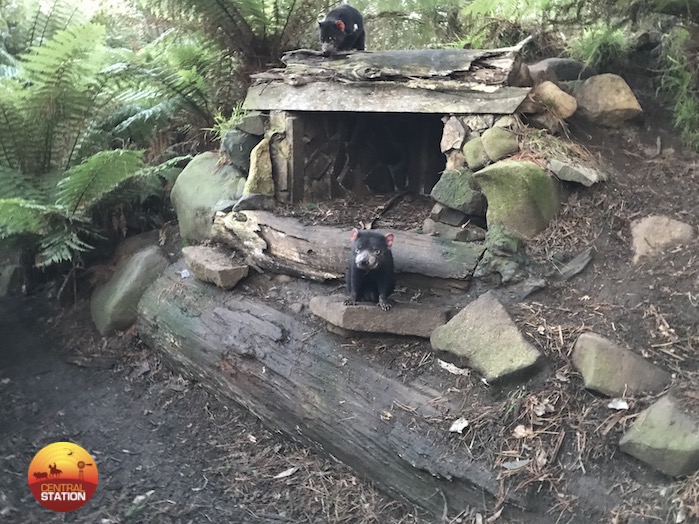Two Territorians on tour tell Tall Tales from the Top End in Tasmania
Host: Charles Darwin University, Katherine Rural Campus
Written by Alison Haines – VET Lecturer, Charles Darwin University.
In our first blog this month I mentioned we were on our way to Tasmania to present at a conference.
Now . . . being hot weather and hands on, in the bush sort of people, flying to Tasmania in mid-winter to dress in suits and present at a mid-city conference in the closest Australian capital city to Antarctica was not something we had come up with all by ourselves!
We were happily going about our business in Katherine sometime in February when a very kind (and smart) lady from our Charles Darwin University Casuarina Campus visited our office one day to find out exactly what it was we were up to on our excursions into the wild blue yonder. After telling her all our tales and showing her our maps, she thanked us and went on her merry way. A few days later she called to say it would be a great idea for us to present on our workplace trainee program at the 26th National Vocational Education and Training Research “No Frills” Conference in Hobart 5th to 7th July.
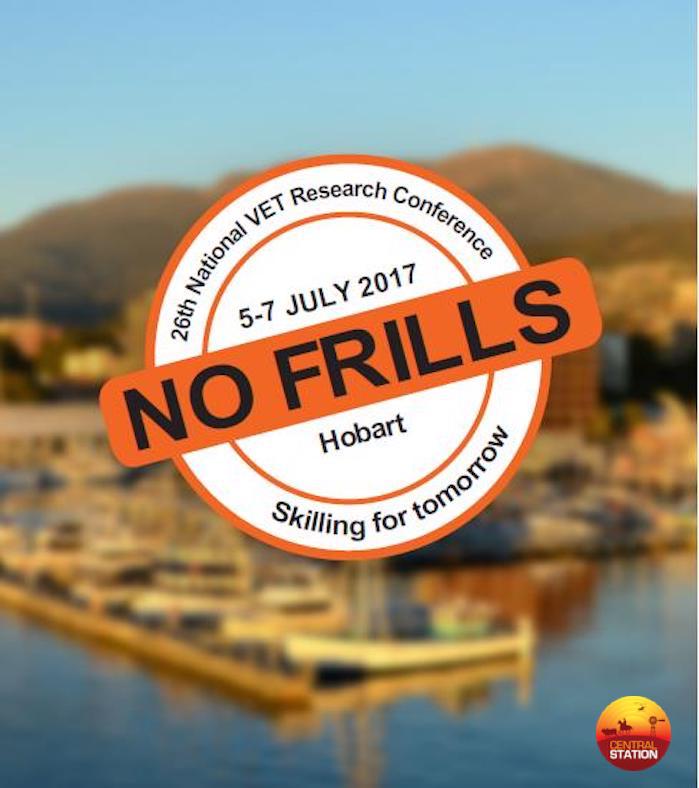 NCVER logo.
NCVER logo.
“Why us?” we said “Who would be interested in what we do?”
Plenty of people as it turns out!
We had to put together and submit a 500 word abstract to be considered to present. Oh! – the word counting and rewriting that went on to get our message across clearly, concisely, and within the word limit!!! Luckily we had a great starting point with Fiona’s catchy title “Tall Tales from the Top End – A case study of training, education, and employment in the Northern Territory”.
Our subject matter for the presentation was how we had adapted our training and assessment practices for remote workplace delivery to ensure quality outcomes for students, employers, and industry. Pretty much what we covered in blog 1 for 2017 plus the challenges we faced and how we addressed these. “Our objectives are to develop the skills and knowledge of agriculture workers from initial entry level through to junior management, “from the ground” up if you will. We aim to deliver real, tangible, useful and appropriate knowledge and skills to benefit employees, employers and businesses. This improves overall industry and workplace outcomes and helps to benchmark and disseminate best practice standards across the industry as a whole.”
We submitted our abstract and sat back to wait. Actually . . . we went back to our day-to-day with Fiona on the road for much of the first half of the year visiting stations and trainees and myself back to the challenges of the my new role.
About the time the acceptance email came was when we remembered, July truly is WINTER in Tasmania. I can’t tell you how many times I repacked my bag trying to meet the 13kg checked baggage limit the Airnorth flight from Katherine to Darwin has. Whilst still having appropriate “city” attire and enough warm clothes to avoid being Frozen . . . I had a feeling that the cold was not nearly as much fun as they make it look in the movie “Frozen” . . . In the end, we rang ahead and they allowed us a few extra kilo’s (bless them!).
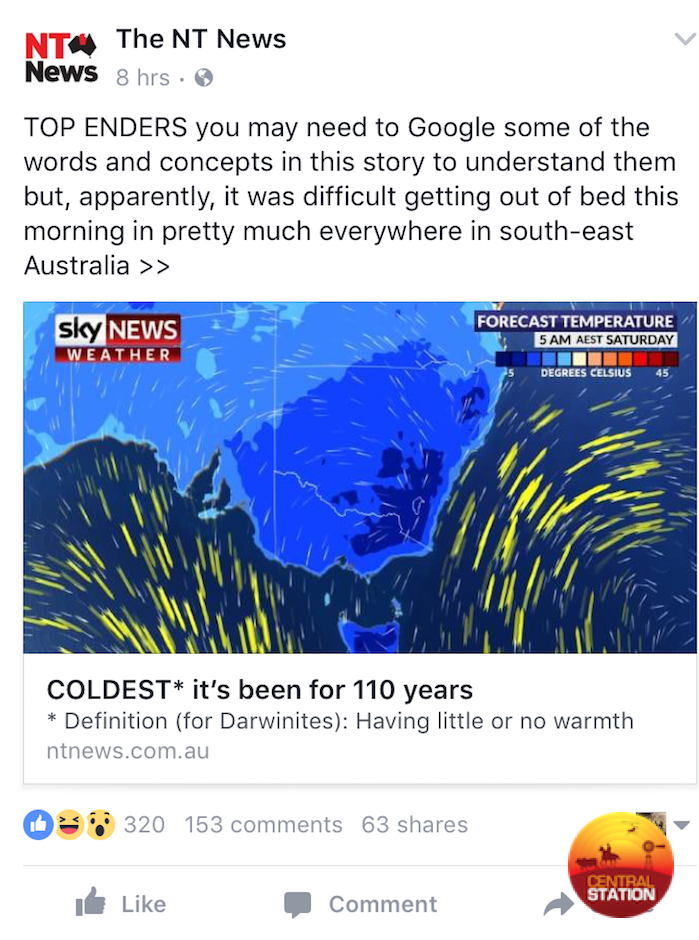 Then, while still in Darwin airport, we found this news article about the coldest winter in 110 years!!
Then, while still in Darwin airport, we found this news article about the coldest winter in 110 years!!
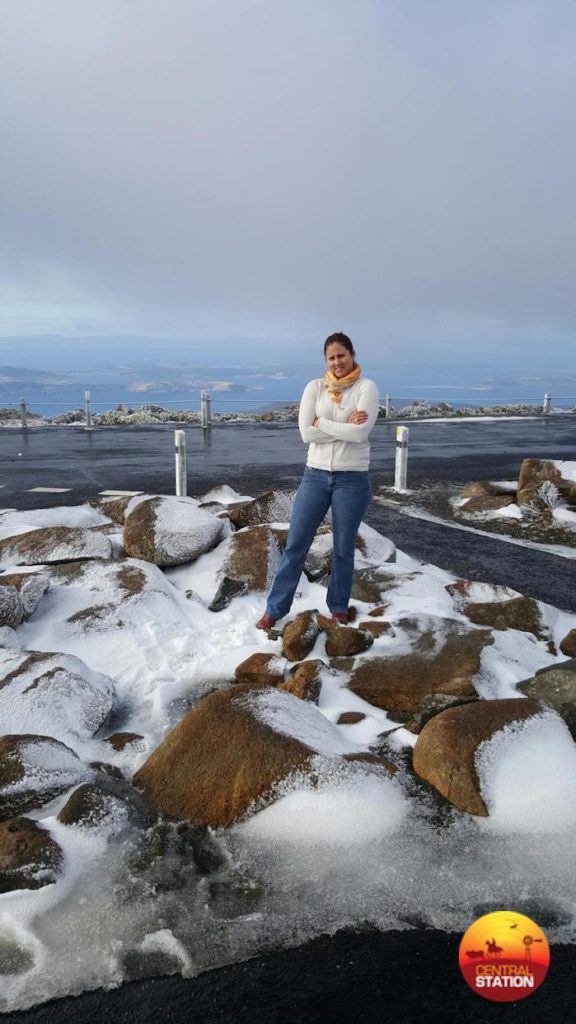 Alison on top of Mount Wellington, lucky enough to see some new snow!
Alison on top of Mount Wellington, lucky enough to see some new snow!
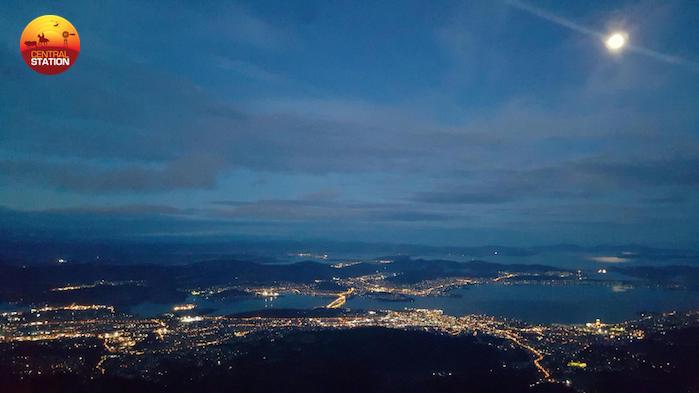 Hobart from the top of Mt Wellington.
Hobart from the top of Mt Wellington.
We were the very lucky recipients of a joint “Practitioner Scholarship” to cover conference costs and contribute towards the cost of our travel. We would like to say a sincere Thank You the sponsors of this scholarship – the Commonwealth Department of Education and Training.
We thoroughly enjoyed the conference presentations on a wide range of subjects and when the time came for us to present we were pleasantly surprised by the room being almost full. Our talk was well received and there were lots of questions. In discussions afterwards we found that there many parallel challenges in workplace delivery across areas and industries as well as many similar challenges with isolation and technology in Tasmania and western New South Wales. We have formed connections with other training providers to assist where we can and to access solutions other organisations are using.
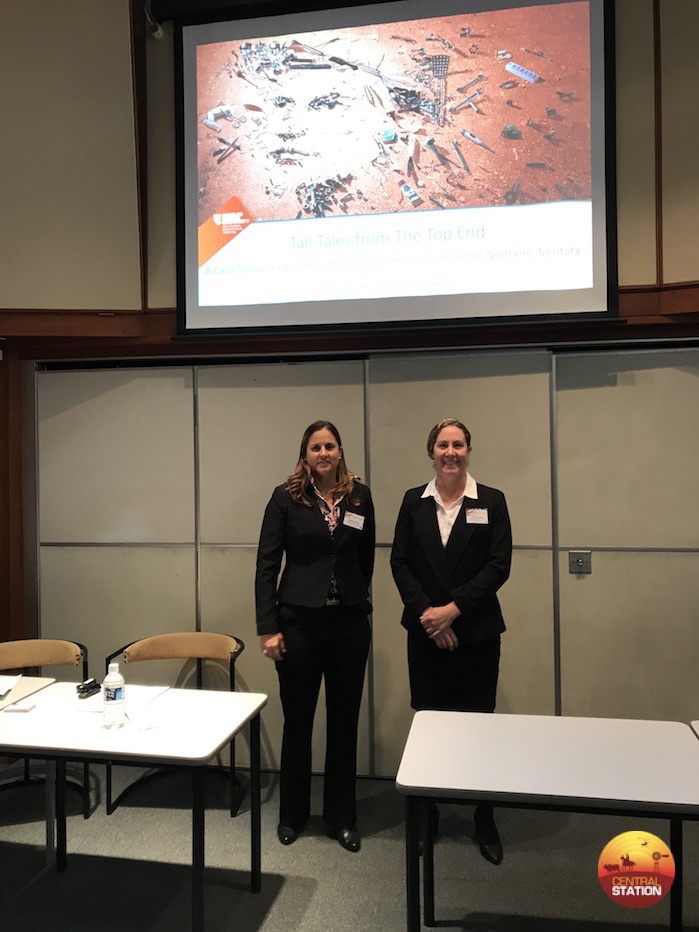 Alison and Fiona waiting for the people to turn up!
Alison and Fiona waiting for the people to turn up!
As we talked to other training providers and industry people we found most felt there was a need to foster closer industry ties and relationships as well as increasing training opportunities and access for disadvantaged student cohorts. The conference was the perfect place and opportunity to make connections whilst sharing ideas and exploring the potential to share resources. This included a very nice welcome breakfast with other presenters, sponsors, and scholarship holders, hosted by the team from the National Centre for Vocational Education Research.
During the time we were in Tasmania, especially in Hobart, we had some very interesting conversations about farming in Australia and people’s perceptions and beliefs, particularly around animal farming of all types. This highlighted the continued importance of telling the good news stories of livestock farming industries and getting the right information out there, which we did at every chance we got!
After the conference there was time for a little sightseeing and sampling of Tasmania’s rightly famous food and wine. We trekked (Ok, we drove) to the top of Mount Wellington where it was a VERY chilly “0” degrees and found a sign commemorating Charles Darwin’s visit to the area. It’s a small world after all!!
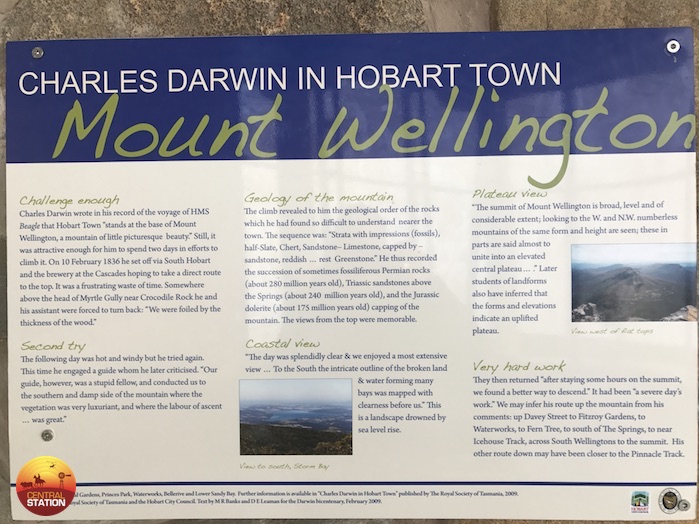 Charles Darwin sign from Mount Wellington.
Charles Darwin sign from Mount Wellington.
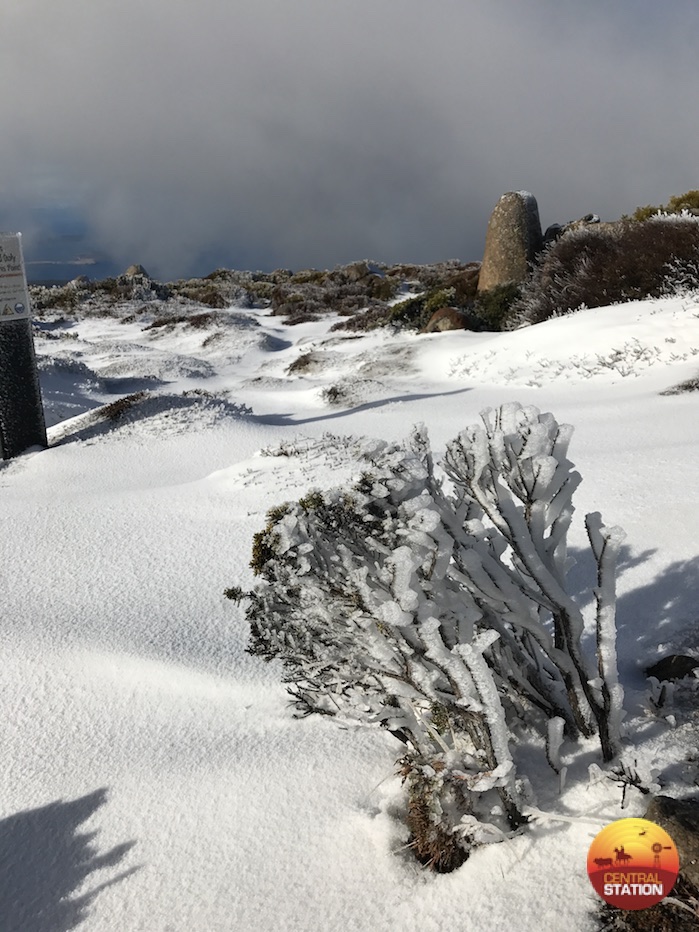 Snow on Mount Wellington.
Snow on Mount Wellington.
We are now back home to a balmy 32 degrees, enjoying the sunshine, and getting ready for Katherine Show.
Thank you for reading, we hope you have enjoyed our “Tall Tales from the Top (and Bottom) End” for 2017.
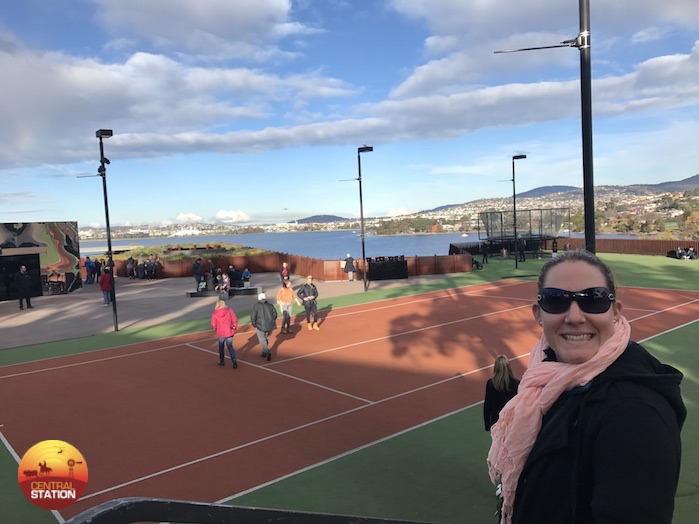 Fiona at the famous Museum of Old and New Art (MONA).
Fiona at the famous Museum of Old and New Art (MONA).
 Scenic Tasmania – World Heritage listed Port Arthur Historic Site.
Scenic Tasmania – World Heritage listed Port Arthur Historic Site.
